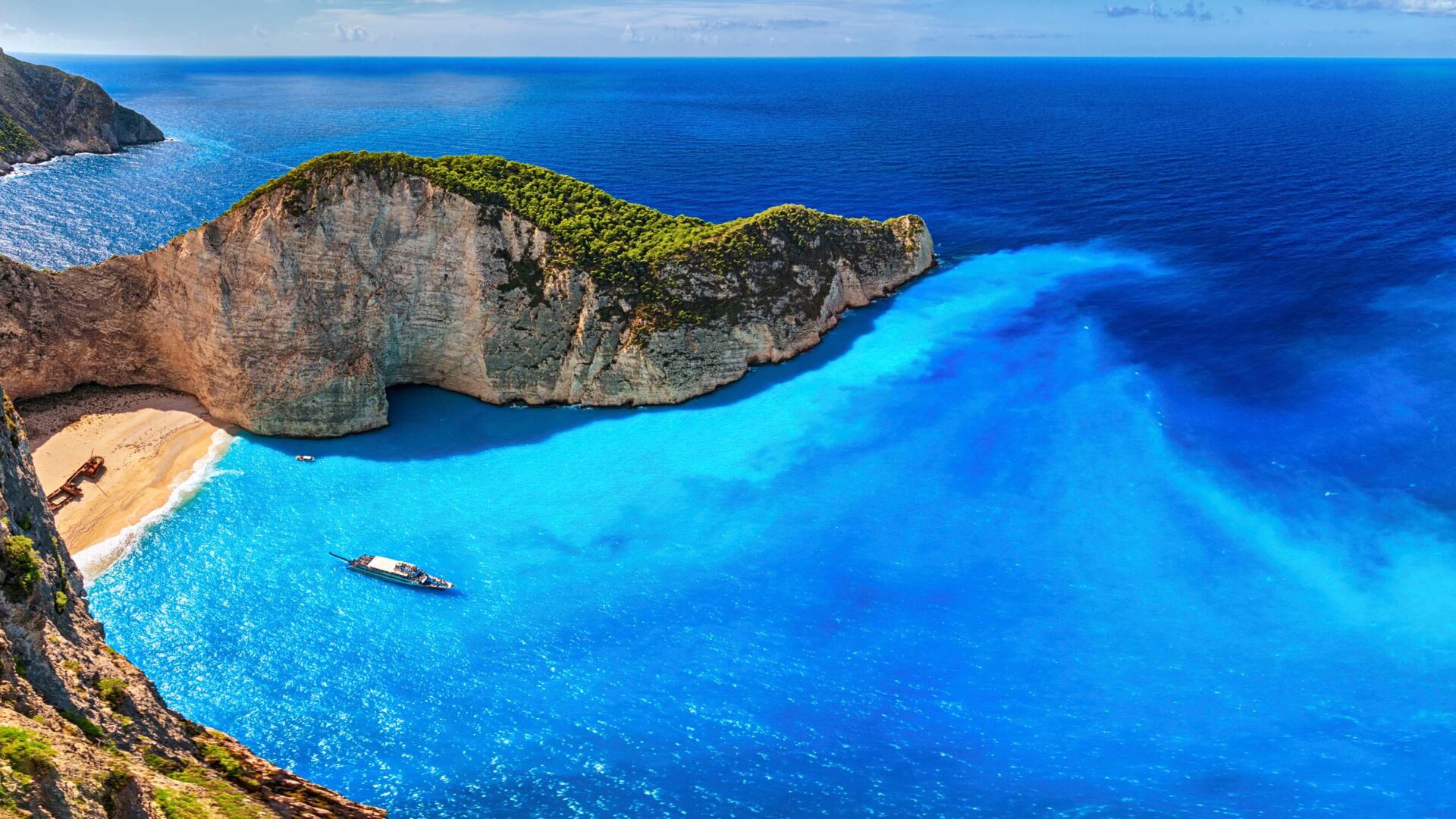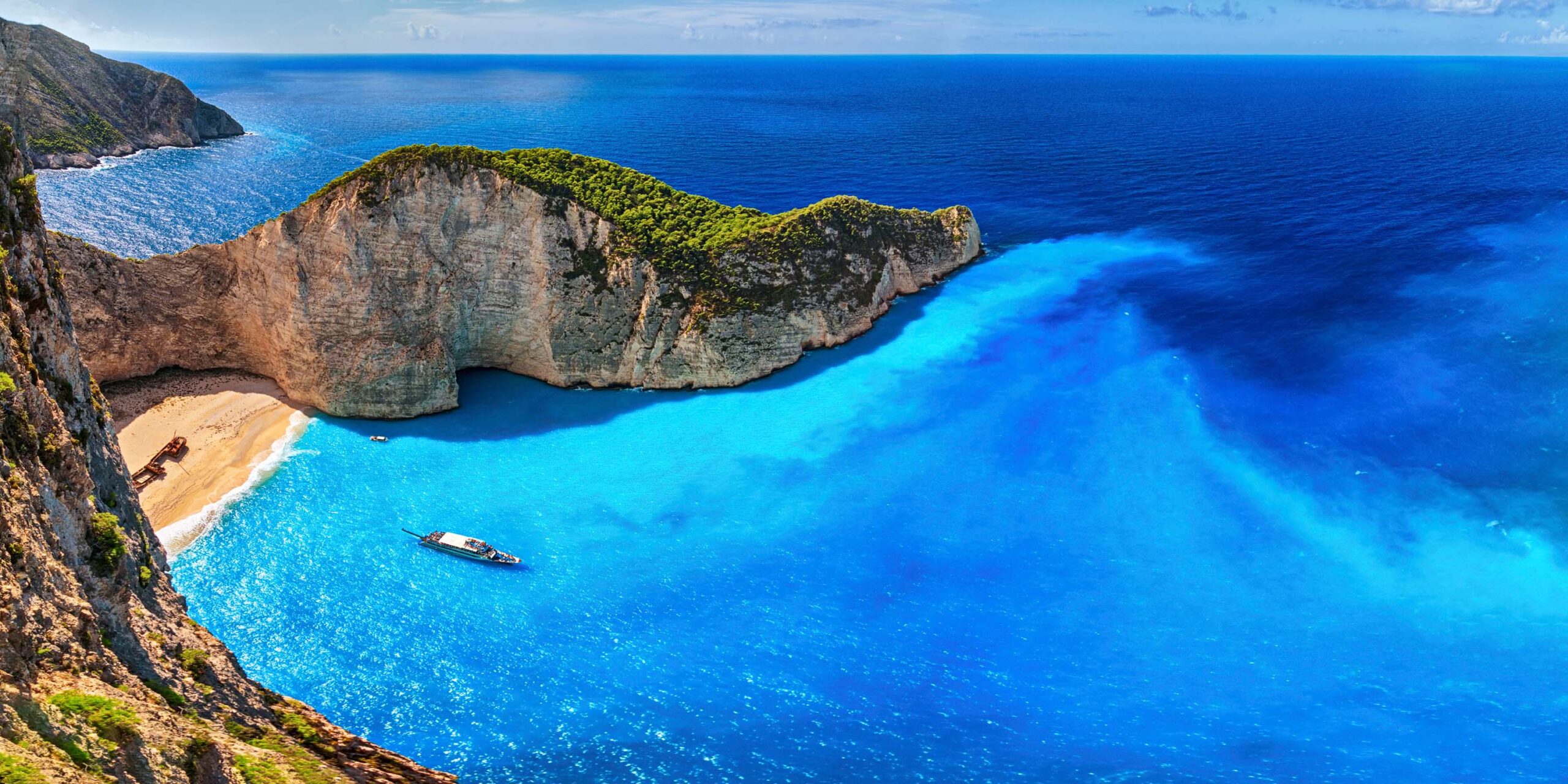
GREEK ISLANDS
Explore GREEK ISLANDS
GREEK ISLANDS
Greek Islands: A Paradise of History, Beauty & Adventure
The Greek Islands are a breathtaking collection of over 6,000 islands and islets, offering stunning beaches, ancient ruins, charming villages, and world-famous sunsets. Whether you're exploring Santorini’s white-washed cliffs, partying in Mykonos, discovering the rich history of Crete, or relaxing in the turquoise waters of Zakynthos, the Greek Islands provide a perfect mix of culture, adventure, and relaxation. From luxurious beach resorts to hidden island gems, the Greek Islands are a must-visit destination for honeymooners, history lovers, and beachgoers alike.
Frequently Asked Questions: Greek Islands
The Greek Islands have a Mediterranean climate, making them a great destination year-round:
- April–June (Spring): Best for mild weather, wildflower blooms, and fewer tourists.
- July–August (Summer & Peak Season): Ideal for beach vacations, vibrant nightlife, and warm waters.
- September–October (Fall): Great for warm weather, fewer crowds, and perfect sea temperatures.
- November–March (Winter & Off-Season): Best for budget travelers, but some islands are quiet and seasonal attractions may be closed.
- Santorini – Famous for white-washed buildings, blue domes, volcanic landscapes, and legendary sunsets.
- Mykonos – The party capital with luxurious beach clubs, windmills, and cosmopolitan charm.
- Crete – The largest island, offering ancient ruins, stunning beaches, and world-class cuisine.
- Rhodes – A medieval gem with an Old Town, historic castles, and beautiful beaches.
- Corfu – A lush green island with Venetian architecture, stunning beaches, and lively town squares.
- Zakynthos (Zante) – Home to Navagio Beach (Shipwreck Beach) and crystal-clear waters.
- Milos – An off-the-beaten-path island with lunar-like rock formations and hidden coves.
- Naxos – A family-friendly island known for its beaches, hiking, and authentic Greek charm.
- Paros – A trendy island with golden beaches, windsurfing, and a relaxed vibe.
- Kefalonia – A serene island with dramatic cliffs, turquoise waters, and underground caves.
- Moussaka – A layered dish with eggplant, minced meat, and creamy béchamel sauce.
- Souvlaki & Gyros – Grilled skewered meats served with pita, tzatziki, and fresh veggies.
- Feta Me Meli – Baked feta cheese drizzled with honey and sesame seeds.
- Dolmades – Stuffed grape leaves filled with rice, herbs, and sometimes meat.
- Greek Salad (Horiatiki) – A classic mix of fresh tomatoes, cucumbers, onions, olives, and feta.
- Fresh Grilled Seafood – Octopus, calamari, and fish straight from the Aegean Sea.
- Loukoumades – Greek honey doughnuts, crispy on the outside and soft on the inside.
- Galaktoboureko – A custard-filled phyllo pastry soaked in syrup.
- Ouzo & Tsipouro – Traditional Greek anise-flavored spirits, best enjoyed with meze.
- Baklava – A sweet pastry made of layers of phyllo, honey, and nuts.
- Flights: Major islands like Santorini, Mykonos, Crete, and Rhodes have international airports.
- Ferries: The best way to island-hop—ferries run frequently between popular islands.
- Car Rentals: Recommended for Crete, Rhodes, and larger islands to explore hidden gems.
- Scooters & ATVs: A fun way to get around smaller islands like Mykonos and Paros.
- Public Buses: Available on major islands but can be limited in off-season months.
- Water Taxis: Useful for exploring beaches that aren’t accessible by road.
- For U.S. travelers: No visa required for stays up to 90 days, but a valid passport is necessary.
- For international travelers: Check Greece’s Schengen visa requirements based on nationality.
- EU Travelers: Can enter freely with a valid national ID or passport.
- Currency: Euro (€ EUR).
- Credit cards are widely accepted, but cash is useful for tavernas, beach bars, and small businesses.
- ATMs are available on most islands, but some remote areas may have limited access.
- Currency exchange is available at airports, major towns, and some hotels.
- Greek is the official language.
- English is widely spoken in tourist areas, hotels, and restaurants.
- Learning basic Greek phrases like “Efharisto” (Thank you) and “Kalimera” (Good morning) is appreciated.
- Greet with a handshake or a warm “Yasou” (Hello).
- Tipping is appreciated but not always expected – 5–10% is common in restaurants.
- Respect religious sites – Cover shoulders and knees when visiting monasteries or churches.
- Meal times are later – Dinner is usually served around 8–10 PM.
- Hospitality is a big part of Greek culture – Be friendly and polite to locals.
- Be mindful of siesta time – Some businesses close between 2–5 PM for afternoon rest.
- Restaurants: 5–10% tip is standard, but some places include a service charge.
- Bars & Cafés: Rounding up the bill is common.
- Hotels: €1–2 per bag for bellhops, €2–5 per night for housekeeping.
- Taxis: Tipping is not required, but rounding up is polite.
- Tour Guides & Excursions: €5–10 per person for excellent service.
- For peak season (June–September): Book 6–12 months in advance for hotels and ferries.
- For shoulder season (April–May & October): Booking a few weeks ahead is usually fine.
- For Santorini & Mykonos: Accommodations sell out fast—book as early as possible.
- No COVID-19 test is required for entry, but check for updates before traveling.
- Some beaches require a small entrance fee—bring cash.
- Ferry schedules can change based on weather—always check in advance.
Contact us at 281-229-0862 or admin@pointmetoparadise.com
